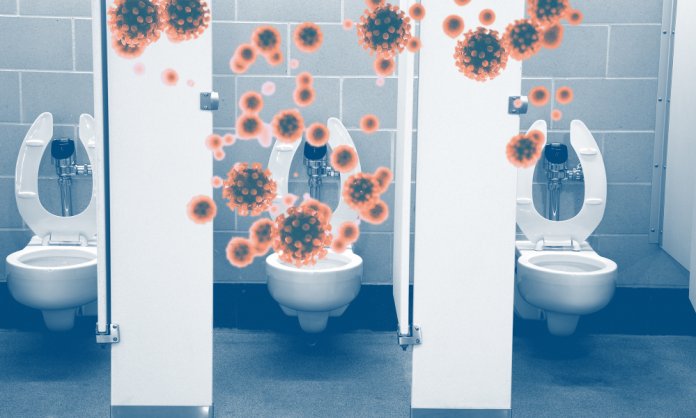Its no surprise that COVID 19 has been wreaking havoc on the entire globe since its spread last year. Well, let us tell you that, according to scientists – there’s one more behavior to be hyper-aware of to prevent coronavirus transmission.
Flushing can cause the spread of the novel virus.
Scientists have recently found that in addition to clearing out whatever business you’ve left behind, flushing a toilet can create a cloud of aerosol droplets that rises nearly 3 feet. Those droplets may linger in the air long enough to be inhaled by a shared toilet’s next user, or land on surfaces in the bathroom.
Droplets can travel up to 3ft – or 91cm – from ground level, according to the computer model used by the scientists from Yangzhou University.
Shutting the lid would avoid this.
COVID 19 can transfer via virus-laden feces
This toilet plume isn’t only disgusting, in simulations, it can carry infectious coronavirus particles that are already present in the surrounding air or recently shed in a person’s stool. The research, published Tuesday in the journal Physics of Fluids, adds to growing evidence that the coronavirus can be passed not only through respiratory droplets but also through virus-laden feces, as well.
Coronavirus is spread through airborne droplets from coughs and sneezes, or objects that are contaminated with them. People who are infected can also have traces of the virus in their feces, although it is not yet clear whether this might be another way to pass the disease on to others.

Proper toilet hygiene must be taken into consideration
Scientists around the globe are testing sewage and wastewater to determine how some people might have become infected with the novel coronavirus. However, other viruses can be spread by poor toilet hygiene, familiar as fecal-oral transmission.
As water pours into the toilet bowl during a flush, it strikes the side, creating turbulence and droplets. The droplets are so small they typically float in the air for more than a minute, according to study author Ji-Xiang Wang and colleagues from Yangzhou University, China.
Dr. Bryan Bzdek, from the Bristol Aerosol Research Centre at the University of Bristol, said although there was no clear evidence that coronavirus might spread in this way, it made sense to take precautions.
Close the toilet lid
Researchers have found viable virus particles in patients’ feces, as well as traces of viral RNA on toilet bowls and sinks in their hospital isolation rooms, although experiments in the lab have suggested that material may be less likely to be infectious compared with a virus that is coughed out.
A computer simulation of the toilet flushing mechanism showed that when water pours into the toilet and generates a vortex, it displaces air in the bowl. These vortices move upward, and the centrifugal force pushes out about 6,000 tiny droplets and even more minuscule aerosol particles.











































